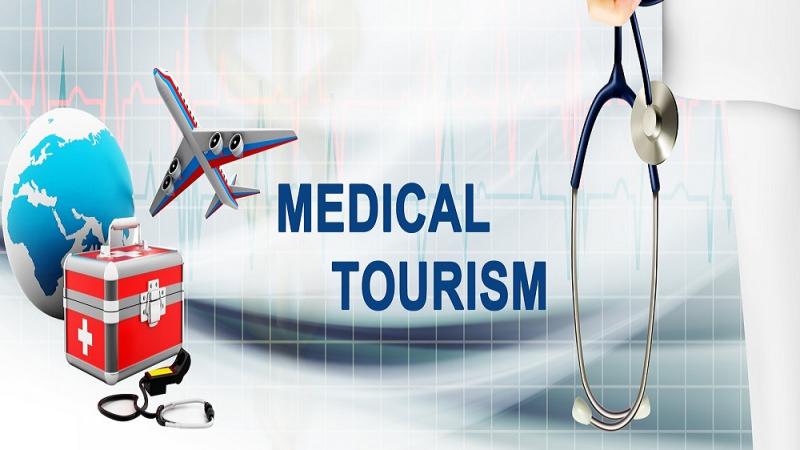Cost Savings and Access to Advanced Treatments Drive Growth
One of the major factors driving the rise of medical tourism is the significant cost savings it provides compared to healthcare in developed countries. With rising healthcare costs in the United States, Canada, and Western Europe, patients are traveling abroad for procedures that are up to 80% cheaper in other countries. India, Thailand, Mexico and Hungary have positioned themselves as top destinations by offering world-class care at fraction of the price in Western nations. Many facilities in these countries employ internationally trained medical staff and use imported medical equipment and technologies. Joint replacement surgery, cardiac bypass, dental work and cosmetic procedures are some of the most commonly sought treatments given their large cost differentials.
Advanced Treatment Options Attract Patients Globally
Another major pull factor for medical tourism is access to specialized treatments and procedures not easily available or approved in the patient's home country. Stem cell therapy, IVF treatment and sex reassignment surgery are some examples where certain countries have liberal policies and highly skilled experts compared to others. Conditions like rare cancers that require experimental therapies also drive patients overseas in search of the latest treatment options. Facilities in Thailand, Singapore, South Korea and Turkey actively promote their strengths in specialized areas like orthopedics, oncology, fertility and transplants to attract international clientele. The ability to receive cutting-edge care for hard-to-treat illnesses is a big incentive for medical tourists.
Southeast Asia at the Forefront of Growth
Countries like Thailand, Singapore and Malaysia have emerged as leading medical tourism destinations in Asia, performing over 1 million medical tourist arrivals collectively per year. Strong infrastructure, world-class hospitals, high medical standards and English speaking staff have positioned Southeast Asia favorably over other regions. Joint Commission International accredited hospitals with modern facilities provide reliable healthcare aligned with international quality norms. Aggressive government support through visitor visas, treatment packages and promotion have catalyzed growth. Thailand in particular has benefited fromover 30 years of experience in medical tourism, establishing itself as a top provider of elective surgery, wellness and alternative therapies.
India Makes its Mark in Medical Tourism Sector
India also has emerged as a fast growing force, hosting nearly 2,50,000 foreigners annually for medical care. It offers 65% cost savings on the US for most procedures thanks to inexpensive skilled labor and state-of-art infrastructure. Top hospitals deploy modern technologies and focus on restoring health through Ayurveda, yoga and naturopathy. The government established "Medical Visa" category in 2014 to boost sector. Growing number of qualified English speaking doctors and JCI accredited hospitals now cater globally. India particularly attracted to patients from developing nations like Africa and the Middle East given geographic and cultural familiarity. Strong growth of 20-25% annually makes India an increasingly serious player in Asian medical tourism landscape.
Regulatory Compliance Critical for Sustained Growth
While affordable care attracts patients worldwide, ensuring consistent quality standards is essential to safeguard medical tourism's reputation and long term viability. Establishing internationally recognized accreditation norms and ongoing compliance is thus important. Hospitals pursuing Joint Commission accreditation undergo rigorous evaluation of facilities, staff credentials and patient safety practices. National regulators must also work diligently to investigate and shut down rogue operators. Governments play a role in medical tourism promotion but should adequately oversee treatment quality, ethics and legal disputes. As medical tourism continue ballooning across Asia and other regions, proper regulations will determine if growth sustains over next decades in an industry worth over $100 billion globally.
Europe Expands its Reach in Medical Travel
While generally more expensive than Asia, countries like Hungary, Czech Republic, Israel and Turkey have increasingly emerged as popular medical tourism destinations for Europeans and others. Advanced facilities, English proficiency and geographic accessibility allow these nations to compete effectively against Asian centers. Hungary in particular has made significant strides, now receiving over 200,000 medical tourists yearly. It offers high quality care at almost half the cost of Western Europe through government incentives for foreign patients. Growing numbers of European nations are also recognizing medical tourism as a revenue source, facilitating visas and promoting facilities to share in this expanding trade. The trend of traveling within regions versus intercontinentally will likely accelerate medical travel between neighboring European countries.
Digital Technologies Facilitate Medical Travel
The rapid spread of Internet and low-cost air travel has massively aided the worldwide growth of medical tourism. Online resources providing treatment cost comparisons and profiles of international hospitals empower prospective patients in their research and decision making. Dedicated medical travel agencies and facilitators leverage digital technologies to seamlessly arrange visas, accommodation, procedures and post-op support. Patients can read real accounts of medical travel experiences online, building confidence in lesser known destinations. Governments optimizing their online presence to promote accredited facilities and policies will gain competitive advantages. Live video consults allow doctors across borders to efficiently evaluate patients pre-travel. As digital connectivity continues pervasive spread, medical tourism facilitation will grow increasingly streamlined, driving further expansion in international patient mobility.
In conclusion, medical tourism has grown tremendously worldwide fueled by substantial cost advantages compared to highly regulated healthcare markets. Asia dominates the multi-billion dollar trade thanks to developed infrastructure, accredited hospitals and aggressive government support. Digital technologies empower patients with information and streamline the entire process while regulations maintain quality standards critical for sustained growth. More countries will recognize medical tourism opportunities as a major economic engine. Driven by affordability, accessibility and now facilitated by the Internet, cross-border healthcare mobility looks set for many more years of rapid expansion globally.
